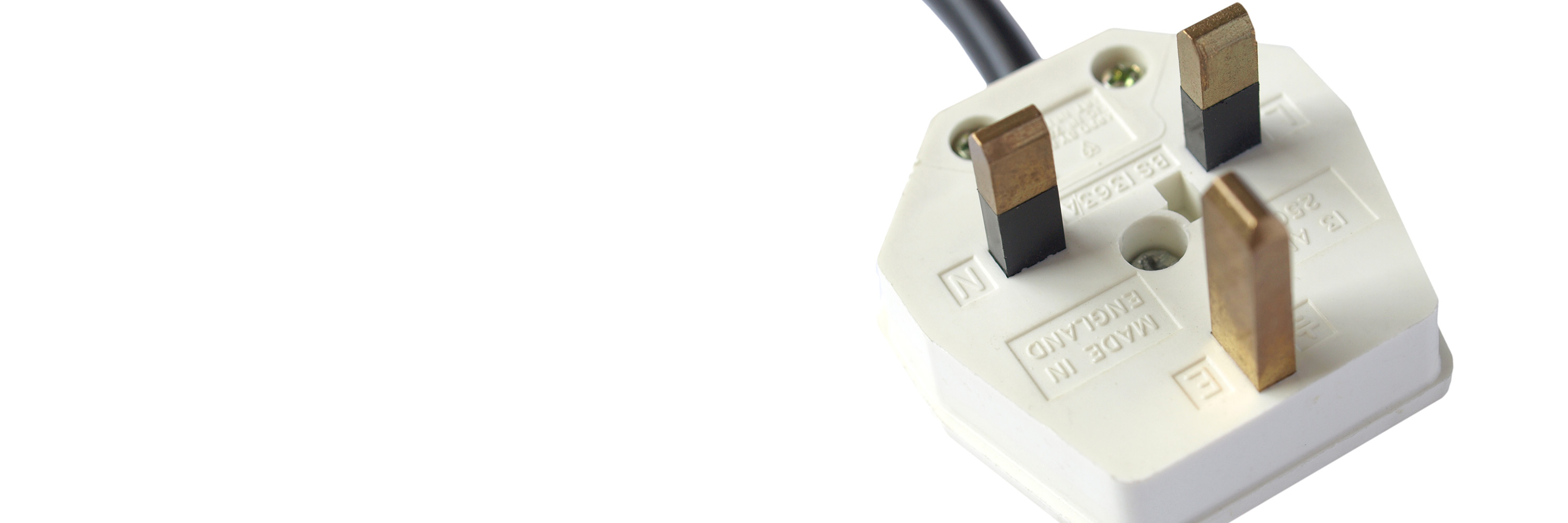Firstly, it's important to know that we do not allow any of the following:
- caravans on a driveway/outside your home
- removing internal walls
- installing a range gas cooker
- building conservatories or a 'lean-to'
- loft conversions
- partitioning
- installing solid fuel or gas fires, including log burners
- chimney breast removal
- structural alterations
- adding doors and windows
- installing patio, French or bi-fold doors
- installing cat flaps.
We know you want your home to work for you, and you have the right to improve your home under your tenancy agreement. However, you should always check if you need permission before you make any alterations to your home. This page gives you advice on what to do together with guidance about specific conditions and requirements for different types of alteration. You should always request permission in writing and before you start any work, and bear in mind that some alterations might need permission from your local authority – which isn’t guaranteed.
We aim to respond to permissions requests in ten working days.
We may want to inspect any alterations you make, and we’ll let you know if we need to. We may also need you to carry out further work if something has not been done in line with the permission we have given you or relevant standards. If you decide to leave your home, we may ask you to return the property to the original condition, or we may offer you compensation for any improvements you’ve made in line with our compensation policy.
If you don’t ask for our permission, carry out alterations we’ve said no to, or make alterations that haven’t been carried out properly, we can take action against you. This might mean asking you to return the property to its original condition, carry out additional work, or we might complete the work ourselves and charge you for it. In extreme cases, we may be forced to take legal action against you and end your tenancy with us.
Disclaimer: we reserve the right to remove any defective workmanship and charge you for any work that is needed to put things right.
Kitchens and bathrooms
- Kitchen alterations
- Changing a cooker
- Swapping showers for baths
- Swapping baths for showers
- Replacing your bath

If you want to make any changes to your kitchen, other than normal decorating, you must submit a professional kitchen diagram which details the changes you would like to make. One of our asset surveyors will review your plan and we will give you the go-ahead if it meets the required standards.
If you need to make alterations to electrical circuits, you must make sure these are carried out in line with the IEE Regulations (latest edition), and send us a test certificate.
If your gas pipes need to be moved, this has to be done by a Gas Safe registered installer and you must send us a certificate for our records.
If not, we will let you know of any changes to the plan you could make to get our approval.
Please note, we cannot accept hand-drawn or hand-written designs.
Click here to let us know you want to make changes to your kitchen.

You're welcome to change your cooker, as long as the work is completed by a qualified person.
This includes swapping a gas cooker for an electric one or the other way around.
If your home doesn't have a gas supply this will need to be installed by a registered Gas Safe engineer at your own expense.
Once the work has been done you'll need to submit the relevant certificates.

If you don't live in an adapted home you can replace an existing shower with a bath if you meet the following conditions:
- You pay the installation costs, including for removal of waste to an approved tip.
- You pay for repairing any damage to floors, walls, ceilings, skirting boards etc to a high standard.
- The work must follow building regulations as well as any other regulations from your local water authority.
- Any other associated maintenance issues are your responsibility.
If you live in one of our sheltered homes (for elderly and disabled people), please discuss your plans with us first.
Click here to let us know you want to shap your shower for a bath.

We only allow customers to replace a bath in their home with a shower if it is necessary for medical reasons.If you are in this situation you should contact the social services team at your local council. They will carry out an assessment and advise of your needs.
Please provide us with supporting information from a medical professional in the enquiry form below.
Click here to let us know you want to swap your bath for a shower.

You can replace your existing bath if you meet the following criteria:
- You pay the full costs of installing the new bath, including for the removal of waste to an approved tip.
- You must pay for repairing any damage to floors, walls, ceilings, skirting boards etc to a high standard.
- The work must follow building regulations and any other regulations from your water authority.
- Any other associated maintenance issues are your responsibility.
We can only allow fitting of a standard bath. You must not install a non-standard size or shape bath, or a special bath (eg jacuzzi).
If you're replacing your whole bathroom suite and any electrical circuits need to be altered, this must be carried out in line with the IEE Regulations, and you must send us a test certificate.
External work
- Driveways
- Sheds
- Patios or decking
- Fences
- Painting external doors
- Tree removal
- Electric car chargers
- Adding an external socket
- Installing a pond

Due to fire safety reasons we don't allow caravans to be stored on a driveway/outside your home.
We don't usually have a problem with customers installing a driveway at their property, as long as it is within your garden (ie not a communal space) and it meets the following criteria:
- Permission will be needed from highways or other relevant authorities for dropped kerbs and/or over a footpath - you will need to provide us with evidence of this when you contact us to request a driveway.
- You must get planning permission from your local authority for the type of hard-standing to be used. You must also re-apply for this permission if you change the surface in the future.
- The gradient of the drive should not be steeper than 1 in 10.
- You should be careful not to damage any underground services, inspection chambers and covers, house foundations, retaining walls, rainwater, soil and vent pipes. If the work does cause damage to this kind of system or structure, you are responsible for repairs (this includes damage to the existing pedestrian path if it is used by vehicles). All future maintenance of the drive will be your responsibility.
- There must be at least one metre of clear paved access when the vehicle is parked on the drive, to provide access for refuse collection.
- The drive should be more than 4.6 metres from a window used for ventilation purposes to a habitable room.
- Work should be completed within 28 days of starting, to avoid works being unfinished and unsightly.
Other things to note:
If you damage any underground service, you'll be liable for the repair. Therefore, you should contact service providers before any work starts to ensure that none of their equipment will be damaged. Here are some examples of services you should check with:
- The local water authority.
- The local electricity network provider - your account will advise who to contact.
- The local gas network provider - your account will advise who to contact.
- British Telecom.
- Your local authority about sewers.
Click here to let us know that you would like to install a driveway.

Putting up a shed on your own garden is normally ok, as long as it is a temporary structure which can easily be removed at the end of your tenancy and meets the requirements below.
You must not:
- put sheds up on communal spaces
- put up sheds in front of your home
- put up a brick or block shed.
If you are planning on putting up a shed, you should follow these guidelines:
- The garden shed should be solid, well-built and be well-presented.
- If you want to build your own shed (rather than assemble a 'kit') you must use traditional garden shed building materials and construction styles. We would not approve a shed made from, for example, pallets or second hand roofing sheets.
- The garden shed should be more than two metres away from all adjoining buildings, as long as there are no windows on the adjacent wall. If there is a window on the adjacent wall, the shed should be at least 3.5 metres away. Don't forget to leave space to maintain fences and hedges around the shed!
- Any garden shed bigger than ten cubic metres must be more than five metres away from the house.
- A building with a ridged roof should be less than four metres high, and three metres high if it has any other type of roof.
- A building next to a boundary should be less than 2.5 metres high.
- The building structure should not cover more than half of the garden.
- If you're planning on installing an electrical supply to the shed, this work must be carried out by an electrician registered to NICEIC or a similar organisation and to the 18th edition BS7671:2018 requirements for electrical installations of the NICEIC regulations. You must keep a copy of all electrical certificates for future reference.
Don't forget insurance!
You will need to get adequate insurance against damage caused by things such as wind damage, fire, explosion, flooding, burst or leaking pipes. You may already be covered by your existing insurance, so check the policy to be sure.

If you have your own garden (ie not shared with other households) it is fine for you to put down a patio or decking. There are some things you must consider though:
- All waste must be removed appropriately.
- The finished level of the patio must be 150mm below the property's damp proof course. If you're installing decking, there must be a 50mm gap between the decking and the building (to avoid causing damp problems).
- The foundation and surface must be built carefully to avoid damaging any underground services. If you do damage these structures or services, it is your responsibility to carry out repairs.
- If you're installing decking, you'll need planning consent if it's going to be more than 30cm above the ground. Planning regulations also say that decking must not cover more than half of the garden area.
- Any further maintenance of the patio or decking is your responsibility.
Click here to let us know about your plans to install a patio or decking.

Putting up fencing is usually fine if you have your own garden (not a shared or communal area).
If you are planning to install fencing, you should follow these guidelines:
- You have to pay for the work - which must include appropriate removal of waste.
- Fences at the back of the house should be lower than 1.8m tall from the highest ground level.
- Fences at the front of the house must not be taller than 1.2m and follow highway regulations.
- The fence should be made from appropriate material and look tidy and professional.
- You should keep the fence in good condition and it must not invade nearby properties.
- You are responsible for all future maintenance.
Please note:
Newly built fences cannot be altered within the warranty period. If your house is less than 15 years old, please check with us for more information.
Areas with an open plan design do not have permitted development rights and so cannot be fenced in.
Click here to let us know about your wish to make changes to your fences.

Only certain types of doors can be painted. To help us to help you, please upload a picture of your door with the enquiry form below.
Once you've submitted your photo, one of our surveyors will review it and be in touch to let you know if you can go ahead or not.
Click here to let us know about your plans to paint an external door.

If the tree is within the boundary of your property, and not protected by a Tree Preservation Order (TPO) you may remove it.
Please check with your local authority before cutting it down though.
You may only cut back trees that overhang onto your property from a neighbour's home up to the boundary.

If you want to install a charger for an electric vehicle, you must ask permission.
Your property will need a well-maintained driveway with a dropped kerb. If you’ve not already got one, you’ll need to ask permission from the council to install one at your own cost. Permission cannot be granted for charging points to be installed if your designated parking space is in a communal area, such as a car park.
If you have your own driveway, you’ll need to hire a qualified electrical contractor to install your charger, and it must be completed in line with the 18th Edition IEE Wiring Regulations. We’ll ask you to provide a copy of the test certificate for the work.
You’ll also need to make sure that when your car is charging, the lead won’t cause a tripping hazard to the public, and that it won’t be on a public road or right of way.
Any damage to your home will need to be made good with similar materials.
As with any alteration, we have the right to ask you to remove or remedy any work that’s not been completed to the proper standards. If we identify that an EV charger hasn't been installed in line with our terms and conditions, we will disconnect the charging unit until it can be appropriately installed.

You need to ask our permission to add an extra electric socket. The work has to be completed by a qualified electrical contractor and we’ll need to see a copy of the test certificate for the work. All external sockets must be IP rated.
If there’s any damage to the walls, floors, ceilings or skirting boards, this has to be fixed.
As with any alteration, if it fails any future safety inspections we will ask you to remove it or remedy the issue at your own cost.
Click here to let us know you want to install an external power socket.

You need to ask our permission to install a pond. We don’t allow sunken ponds to be installed.
The pond can’t be bigger than 5m2 and it needs to be at least 3m from any buildings.
You need to use either reinforced fibreglass or Butyl liner that’s been properly bedded on sand or insulated matting material, to prevent any puncturing of the liner.
You’ll also need to request permission to add an external electricity socket as we don’t allow filters or pumps to be fitted internally.
If any damage is caused to buildings by the pond, we will ask you to remove it.
If you move out, you’ll have to remove the pond at your own cost.
Amenities and security

You can install CCTV at your home as long as the camera does not directly overlook other properties and it is only used to monitor the intended spaces. You must restrict your cameras where possible so that areas that aren't intended to be viewed are not seen and so that you don't intrude into others' privacy.
For more information on home CCTV and respecting the privacy of others, please read this recent government briefing note.

You can install an outside tap as long as you meet the following criteria:
- Understanding that the cost of the installation and any maintenance of the tap is your responsibility.
- The work follows any regulations set out by your water authority - usually meaning an isolating valve and double check (non-return) valve should be fitted in the building, and the tap itself has a hose union bib tap attached to the main building.
- You accept that any damage caused by the weather is your responsibility.
- You accept that any damage to walls, plastering, cupboards, pipes, etc is to be fixed at your expense.
Please tell us once you have installed your outside tap.
Click here to let us know that you have installed an outside tap.

You can choose to have a water meter installed at your home. The cost of the installation is your responsibility and the work must be completed by your water authority.

To install a satellite dish you must follow this guidance:
- The dish must not be more than 600mm in diameter.
- It must be below the line of the roof and not fixed on a roof slope, or a wall fronting a highway.
- It must not be attached to a chimney stack.
- There must not be an existing satellite dish attached to the dwelling. If you live in a block of flats, there cannot be more than two dishes per block.
- If the dish needs to be removed for maintenance purposes, the entire cost is be your responsibility.
- No part of the dish should encroach onto adjoining properties.
- If the dish is installed over any paths, it needs to be at least 2.1m above ground level.
- In some areas you may need planning permission - you should check with your local authority before starting any work to see if this is the case.
- If you live in a listed building you might need consent to install a satellite dish.
If you meet all of the above terms, you may install a satellite dish.
Click here to let us know you want to install a satellite dish.

You can install a scooter store as long as it is not in an internal space, a communal area or communal garden.
It must be made of traditional building materials (not constructed out of pallets or roofing sheets, for example) and should be more than two metres from any buildings. If there are windows on the wall nearest the scooter bin, it has to be more than 3.5 metres away.
If it's bigger than ten cubic metres it must be five metres away from the house.
A scooter store with a ridged rood needs to be less than four metres high. If it has any other type of roof, it must be less than three metres high. If your bin will be next to a boundary with another property, it should be less than 2.5 metres high.
The scooter store must not cover more than half of your garden, and any electrics installed to the scooter bin must be done by a qualified electrician registered with NICEIC or a similar organisation. The installation must meet the 18th edition BS7961:2018 requirements of the wiring regulations, and you'll have to provide us with the certificates to evidence that this is the case.
We'd recommend you check with your home insurance policy to make sure it covers things like wind damage, fire, explosion, etc. as you will be responsible for your scooter bin.

We will normally give you permission to build a bin store, as long as it can easily be removed at the end of your tenancy and doesn't need foundations.
Internal work
- Laminate flooring
- Smart meters
- Adding an extra socket
- Replacing an electric fire
- Changing lights or fittings

If you live in a house, putting down laminate flooring is fine.
Remember though, that if we need access to any services below the floor (such as wiring or pipes) for repairs, you'll need to lift the flooring before we arrive. You'll then have to put the flooring back after the repair is complete.
Sometimes, with leasehold properties, there are restrictions on putting down wooden or laminate flooring. If you have a leasehold property, you need to check the conditions of your lease.
You should also note that any costs incurred are your responsibility.
If you live in a flat, please remember to consider your neighbours. Flooring installation can be very noisy for people living below and your day-to-day activity with hard floors may mean more noise for those below than if you have carpet installed. Please ask our permission using the link below to install laminate in a flat.
Click here to let us know you want to install laminate flooring in a flat.

You can choose to have a smart meter installed in your home if you wish to.
Contact your energy supplier for more information.

You need to ask our permission to add an extra electric socket. The work has to be completed by a qualified electrical contractor and we’ll need to see a copy of the test certificate for the work.
If there’s any damage to the walls, floors, ceilings or skirting boards, this has to be fixed.
As with any alteration, if it fails any future safety inspections we will ask you to remove it or remedy the issue at your own cost.
Click here to let us know you want to add an extra power socket

You should request our permission to replace your electric fire.
If the new fire needs to be connected directly to the electricity supply (instead of being plugged in) then a qualified electrician will need to connect it and provide a certificate evidencing that they’re working to current BS7671 Electrical Regulations. Any damage to the walls, skirting boards, floors, etc will need to be rectified.
If you leave the property, you have to leave a working fire.
Click here to let us know you want to replace an electric fire

If you want to make any changes to your lights or light fittings, including socket fronts, you need to ask permission.
You’ll need the work completed by a qualified electrical contractor and we require a copy of the test certificate for the work.
Click here to let us know you want to change some lights or fittings.




